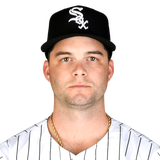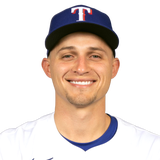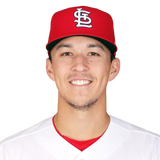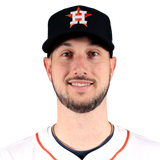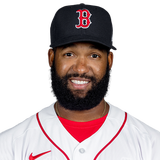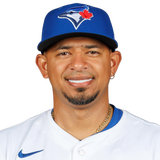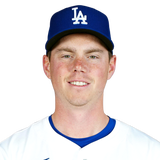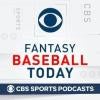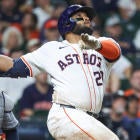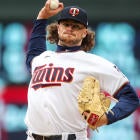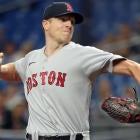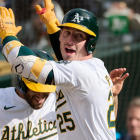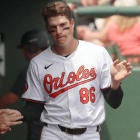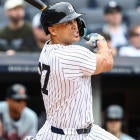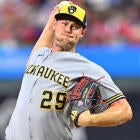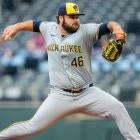Circumstances have changed since our first round of draft prep. We're working with a much shorter schedule now, which of course changes the way certain players are valued. It was always the year of the pitcher, with the most skilled at that position enjoying a bump in value at a time when offense dominates the game. But now, even those with workload limitations are able to join in.
Consider this your reintroduction to the 2020 draft pool, accounting for all the changes that have taken place since and because of the coronavirus lockdown. Over the span of 20 articles, Scott White and Chris Towers look at the top 200 in Scott's Rotisserie rankings, highlighting the reasons for and against drafting each. It makes for a well-rounded education on every player, revealing critical details that more argument-based evaluations might conveniently leave out.
So if you want a crash course on this year's player pool, particularly in light of more recent events, you've come to the right place. We're going through Nos. 121 through 130. And you can find the rest right here: 1-10 | 11-20 | 21-30 | 31-40 | 41-50 | 51-60 | 61-70 | 71-80 | 81-90 | 91-100 | 101-110 | 111-120 | 121-130 | 131-140 | 141-150 | 151-160 | 161-170 | 171-180 | 181-190 | 191-200
No. 121-130
| ||||||||||||
The Case For: Though we haven't seen Ohtani make a full-length start since May 2018, he was everything anyone could want in a pitcher back then. He's still that guy who struck out 12 over seven one-hit innings in his second career start that year, and he's nearing a recovery from Tommy John surgery, expected back on the mound for the start of the shortened season. Meanwhile, the Angels will continue using him as a hitter, and he reiterated last year that his bat can hold its own, with contributions in all five categories on the days he's in the lineup.
The Case Against: What makes Ohtani most interesting — the two-way ability — is also what holds him back from a Fantasy perspective. Playing both sides of the ball requires more rest on both sides of the ball, and you have to choose between the pitching and the hitting contributions at the start of a scoring period. Now, if your league's scoring periods are only a day long, that's great. You'll probably get the full benefit since he's unlikely to hit on the days he's pitching anyway. But if they're a week long, trying to forecast his schedule will become a year-long headache. He's most valuable as a pitcher since his bat won't be in the lineup every day, but he's unlikely to be on a typical five-day schedule. -Scott White
| ||||||||||||
The Case For: You don't love the batting average, but Hoskins had been plenty productive in his career before 2019. Even if you take his whole career including 2019, his 162-game average has seen him hit 36 homers, score 95 runs and drive in 102. He's still mostly just been a three-category contributor, but if he tightens up his launch angle, it's possible Hoskins could be more like a .260 hitter.
The Case Against: There's not much evidence to suggest better days are coming for Hoskins, unfortunately, apart from some work done to change his stance in the offseason. Based on Statcast batted-ball metrics, he might have been lucky to have as good a season as he did in 2019 — his expected batting average was .221 while his expected slugging percentage was .426, both below his already disappointing actual numbers. Hoskins' swing was a mess last season, and there's no telling if this offseason's mechanical adjustments will be enough to turn it around. -Chris Towers
| ||||||||||||
The Case For: Weren't we drafting this guy in, like, Round 4 last year? Wasn't he once the top prospect in baseball and the runner-up for AL Rookie of the Year? Didn't he begin his career with two near 20-20 seasons, contributing a respectable (or better) batting average in both? And we're going to throw it all away after just one bad season? Pshaw!
The Case Against: Saying Benintendi began his career with two near 20-20 seasons is a stretch, first of all. The second of them, 2018, saw him hit only 16 home runs, including two in the second half, which is sort of where the trouble began. In his past 770 at-bats, which includes that second half, he has just 15 home runs in 14 steals. You don't need me to tell you that's some pedestrian production in today's landscape. His numbers last year were completely earned, too — weak contact, sideways plate discipline, no salvation to be found in the xBA or xwOBA. If you're investing in a turnaround, it's with little to back it up. -Scott White
| ||||||||||||
The Case For: Seager had a sub-.700 OPS in the month of April, but given that he was coming back from elbow and hip surgeries, it seems fair to give him a mulligan for that. His 162-game pace from May 1 on? A .282 average, 102 runs, 28 homers, 124 RBI. Seager has long drawn comps to Freddie Freeman for his plate discipline and line drive swing, with the hopes it would one day lead to the kind of mid-career power breakthrough that launched Freeman into the upper stratosphere of hitters. It could be coming in 2020.
The Case Against: If you play in a points league, Seager is a tremendous value here, but in Roto leagues, he's going to need to turn some of those doubles into home runs if he's going to take that step forward, because he doesn't run at all. That might require a swing change, and there's no guarantee he takes the steps needed to produce that change. He's still a solid value at his price if he can get back to hitting closer to .300, but there might not be superstar upside at a position where a dozen players seem to have superstar upside. -Chris Towers
| ||||||||||||
The Case For: The latest in a long series of unheralded players making an impact for the Cardinals, Edman came up and immediately showed plus contact skills and plenty of speed, hitting six triples and stealing 15 bases in his 92 games. If the contact skills are real — and a 13.7% strikeout rate in the minors suggests they are — all he has to do is keep running to be worth his draft price in Roto leagues.
The Case Against: Edman had never really hit this well prior to 2019, which should make us question whether he has enough pop in his bat to be much more than just a punch-and-judy hitter. The juiced ball should help, but we have no way of knowing whether MLB might change the production process to return the baseballs to their less lively state, which would likely impact the likes of Edman more than most. If he profiles as mor elike a seven-homer, 20-steal guy, that probably isn't worth this cost — especially in points leagues, where the steals don't matter quite as much. -Chris Towers
| ||||||||||||
The Case For: A "disappointing" season for Tucker saw him hit. 34 homers and steal 30 bases in 125 games at Triple-A, before adding four homers and five steals in 22 major-league games. How many 30-30 threats are there in baseball in 2020? That's the case for him, and it looks like he already has a spot on the Astros opening day roster.
The Case Against: There has been speculation that the Astros aren't quite as enamored of Tucker as the rest of the baseball world, which might explain why we've been waiting for him to get a chance for nearly two years and haven't seen it yet. The Astros don't exactly have many holes in their lineup, so it might once again be tough for Tucker to find an everyday role. -Chris Towers
| ||||||||||||
The Case For: Santana got his first honest look as a full-timer in quite some time and emerged as a viable power/speed threat in doing so, his 28 home runs representing the fifth-most for anyone with at least 20 steals. Nos. 1-4 (Christian Yelich, Ronald Acuna, Trevor Story and Francisco Lindor) are all first-rounders, at least in traditional 5x5 leagues, and clearly, Santana is much more affordable than that. He did outperform his expected stats (xBA, xSLG, xwOBA), but not by as much as you'd think, his high-end exit velocity and improved launch angle going a long way toward backing up his performance.
The Case Against: Is it possible two organizations prior to the Rangers just whiffed on this guy? Maybe, but it's not like they had him buried in the minors either. He got his chances and hit only .219 in the four years leading up to 2019. Amazing things can happen for players that improve their launch angle in this juiced ball era, but Santana's plate discipline is putrid, which gives him a thin margin for error. Add suspect defense, and it's possible he gets pushed out if he gets off to a slow start. -Scott White
| ||||||||||||
The Case For: It's the same thing every year. Have you heard Dahl plays in Colorado? Have you heard it's roughly a mile above sea level, allowing batted balls to cut through the air like bullets? Dahl has already enjoyed some of its bounty, producing whenever he's been able to take the lineup, but the question of how good he would be if he could just stay healthy remains. He enters the season with a clean bill of health, though, after missing the end of 2019 with a high ankle sprain and should have no impediments to his playing time after settling in against lefties last year.
The Case Against: But are we sure he's good? Maybe his .386 BABIP is just the natural consequence of a guy with strong line-drive tendencies playing half his games at Coors Field, which itself is known to inflate a player's BABIP, but that lofty BABIP appears to be the entire source of Dahl's strength right now. He doesn't elevate well enough for a big home run total and has substandard plate discipline, to put it bluntly. Maybe what he showed in 2019 really was the full extent of his potential, playing time aside. -Scott White
| ||||||||||||
The Case For: Let's take a moment here to fully appreciate what Escobar accomplished last year. His 35 home runs were tied for 23rd in the majors, up there with Bryce Harper and Trevor Story. His 118 RBI were tied with Nolan Arenado for fifth. He was the No. 4 player at second base – with only curious cases like Jonathan Villar, Ketel Marte and DJ LeMahieu ahead of him -- and No.7 at the deepest position of all, third base. So why is he the one being sold at a discount, going right around 100th overall?
The Case Against: What he did, all of it, was pretty fishy. The most obvious is that the sort of RBI total he delivered is normally reserved for some of the best all-around hitters in the game, but beyond that, dude makes some weak contact. He had a hard-hit rate like Daniel Descalso. He had an xwOBA like Marwin Gonzalez. He has proven twice over now that he's more than just the utility infielder those two are, but his production in 2018, when he hit 23 homers with 84 RBI, is more in tune with reality. Besides, if you want proven 35-homer guy who won't kill you in batting average and plays second base, you can take Mike Moustakas a few picks earlier. -Scott White
| ||||||||||||
The Case For: If you like catchers who can hit — and who doesn't? — Smith immediately established himself as such upon taking over as the Dodgers' backstop in late July, homering nine times in 19 games. Even though he slumped over the final six weeks, he still trailed only Mitch Garver in slugging and ISO, not to mention Head-to-Head points per game. It didn't come out of nowhere either. Smith had a huge breakthrough at Triple-A, homering 20 times in 224 at-bats while vastly improving his walk and strikeout rates.
The Case Against: Once he reached the majors, though, Smith's walk and strikeout rates were back to normal, so there may not have been a substantive change there. Neither rate is so bad as it is, but Smith's launch angle is so extreme, with him selling out so hard for home runs, that he's already destined for a low BABIP. Maintaining a respectable batting average, then, may be a problem, as it was with his typical strikeout rate in the minors. So while his season-ending slump doesn't negate what he accomplished as a power hitter, there may have been more correction still to come. -Scott White
So which sleepers should you snatch in your draft? And which undervalued first baseman can help you win a championship? Visit SportsLine now to get rankings for every single position, all from the model that called Kenta Maeda's huge breakout last season, and find out.












